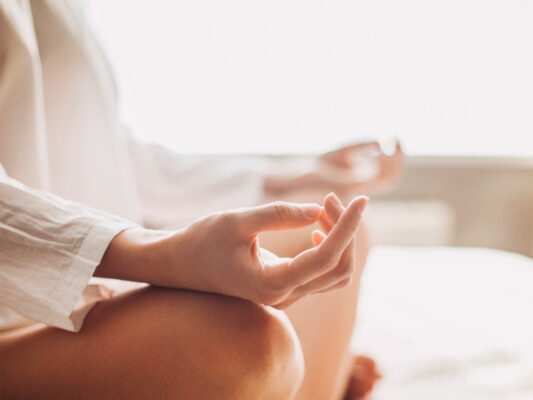Body Scan Meditation can improve your body awareness and work with pain and complex emotions in the body; a lot of people share feelings of relaxation and renewal after this practice.
Have you ever played a game where you have to search for hidden objects? Well, body scan meditation is a bit like that, but instead of searching for objects, you’re searching for sensations in your body! Think of it like a treasure hunt. You’re on a mission to explore every nook and cranny of your body, and you never know what you might find. Maybe you’ll discover a tense spot in your neck or a warm feeling in your belly.
But here’s the best part: there’s no wrong way to do a body scan! You don’t need any special skills or tools. All you need is your body and an open mind. So, get ready to go on a treasure hunt in your own body!
𑗍 Body Scan Meditations 𑗍
Cautions: If you have experienced physical abuse or trauma in the past, it is not recommended to do this practice without a trained professional. Additionally, if you notice intense fear or other strong emotions related to a particular part of the body, please discontinue this practice.
Tips to make the best out of the Body Scan practice
- Tip #1: Set aside time for meditation. The first step to incorporating body scan meditation into your life is to set aside time for it. Start by choosing a time of day that works best for you. It could be first thing in the morning, during your lunch break, or before bed. Aim to practice for at least 10-15 minutes at a time, but feel free to start with shorter sessions if that feels more manageable.
- Tip #2: Find a quiet space. To fully immerse yourself in the practice of body scan meditation, it’s important to find a quiet space where you won’t be interrupted. This could be a spare room in your house, a quiet park, or even a corner of your office. Make sure the space is comfortable and free from distractions like noise or bright lights.
- Tip #3: Start with deep breathing. Before you begin your body scan meditation practice, take a few deep breaths to help you relax and focus on the present moment. Close your eyes and take a deep inhale through your nose, hold it for a few seconds, and exhale through your mouth. Repeat this process several times, allowing your breath to become slow and steady.
- Tip #4: Focus on one part of the body at a time. During your body scan meditation practice, start by focusing on one part of the body at a time. This could be your toes, feet, or hands, for example. Slowly move your attention to different parts of the body, working your way up to the head and neck. As you focus on each part of the body, try to notice any sensations or feelings without judgment. Don’t label them as good or bad, just observe them.
- Tip #5: Practice regularly. Like any new skill, body scan meditation takes practice. Try to practice regularly, even if it’s just for a few minutes a day. Over time, you’ll start to notice the benefits of body scan meditation and how it can help you manage chronic pain.
- Tip #6: Use guided meditations. If you’re new to body scan meditation, it can be helpful to use guided meditations to get started. All my guided meditations provide step-by-step instructions for body scan meditation to help you get comfortable with the practice.
- Tip #7: Get comfortable. To fully immerse yourself in the practice of body scan meditation, it’s important to get comfortable. This could mean lying down on a yoga mat, sitting in a comfortable chair, or propping yourself up with pillows. Make sure you’re warm, cozy, and supported.
- Tip #8: Experiment with different techniques. There are many different techniques you can use during body scan meditation, so don’t be afraid to experiment and find what works best for you. For example, you might try visualizing each body part as you focus on it, or repeating a mantra or phrase to help you stay present.
- Tip #9: Practice self-compassion. Living with chronic pain can be frustrating, but it’s important to practice self-compassion during your body scan meditation practice. Be kind to yourself and don’t judge yourself for any difficulties you may experience. Remember that mindfulness is a skill that takes time to develop, and you’re doing the best you can.
- Tip #10: Track your progress. Finally, consider tracking your progress as you incorporate body scan meditation into your daily routine. Keep a journal or use a meditation app to record how you feel before and after each practice. Over time, you may start to notice improvements in your pain management skills, reduced stress and anxiety, and an increased sense of well-being.
Be Alive 🌱,
❤ Love, Julia
Mind ∞ Body
How to Do Body Scan Meditation to Get the Most Benefits 🎧 ▶️📝
Right off the bat, let’s clear the air about something: when we talk about body [...]
Listen Closely: Your Body is Speaking
Ever stop to think about the hustle happening inside you every moment? Your heart’s ticking [...]
Bare Narratives: The Stories We Wear
Skin Stories We’ve been conditioned to see our bodies as projects, billboards for our successes [...]
The Tension Takedown: How Progressive Muscle Relaxation (PMR) Helps You Let Go of Stress 🎧 ▶️
In the throes of everyday hustle, stress has a way of making its home within [...]
GUIDED MEDITATIONS 💗
DISCLAIMER: The materials and the information contained on the Positive Pranic website are provided for general and educational purposes only and do not constitute any legal, medical, or other professional advice on any subject matter. None of the information on our videos is a substitute for a diagnosis and treatment by your health professional. Always seek the advice of your physician or other qualified health providers prior to starting any new diet or treatment and with any questions you may have regarding a medical condition. If you have or suspect that you have a medical problem, promptly contact your health care provider.






















